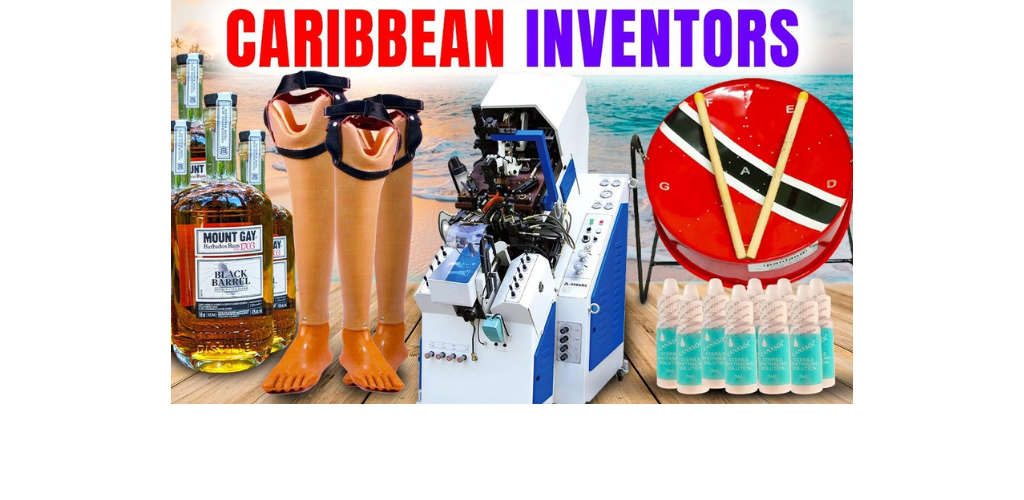Today, we’re embarking on an exhilarating journey through time and innovation, as we uncover the Caribbean’s hidden gems in the world of invention. So, prepare to be amazed by the incredible contributions of these ten Caribbean inventors who have left an indelible mark on our world, as you will be inspired by the resilience, creativity, and determination of these unsung heroes.
We’ll delve into the minds of these ingenious visionaries whose inventions have shaped the course of history as we shine a spotlight on the incredible talent that the Caribbean region has to offer, proving that greatness knows no boundaries. Their inventions have transformed industries, shaped our modern way of life, and inspired countless individuals to push the boundaries of innovation.
Ever wondered who brought the joy of steel drums to the world? Or who engineered the first Search Engine? From revolutionizing communication and transportation to advancing medical science and improving everyday conveniences. In this video, we’ll uncover the brilliance behind these inventions and introduce you to remarkable individuals whose names deserve to be etched in the annals of history.
So, Whether you’re a history buff, a lover of innovation, or simply curious about the hidden narratives of the Caribbean, this article is a must-read or watch out the video presentation linked below.
Subscribe to our blog and stay tuned for our upcoming episodes, where we’ll continue to uncover remarkable stories that reshape our understanding of the Caribbean world.
In no particular order of importance, let’s start with
Alan Emtage – Invented The First Search Engine
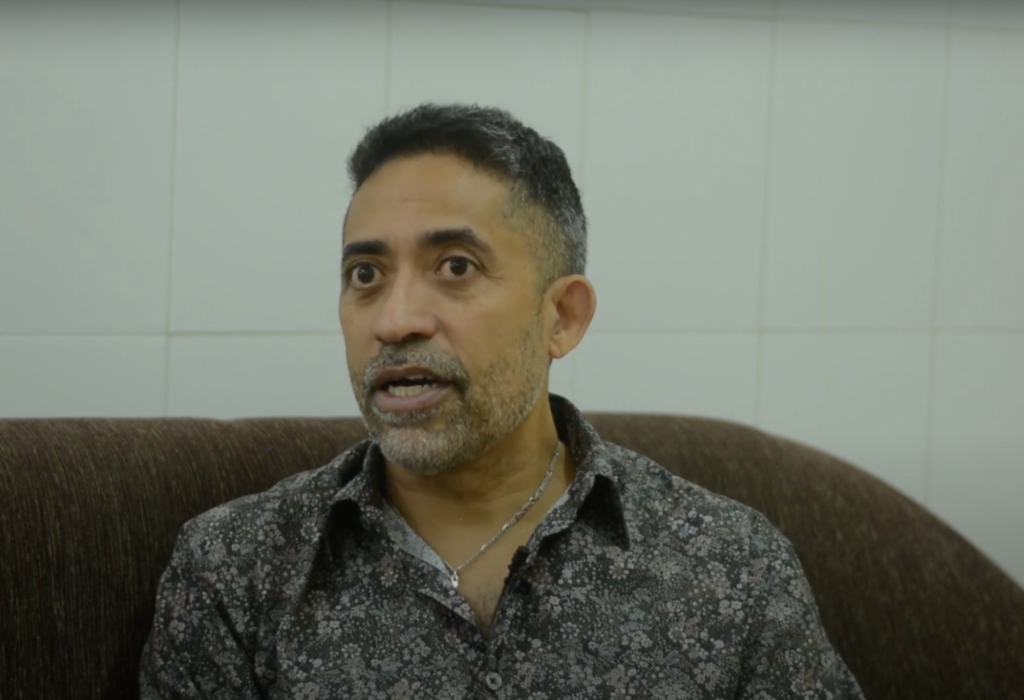
Mr. Alan Emtage is a notable computer scientist and software developer. Born in Barbados, Emtage is based in Canada and is known for his pioneering work in the field of information retrieval. In fact, he is known for creating the world’s first search engine. During his time at McGill University in Montreal, Canada, Emtage developed and implemented Archie, the first search engine of its kind. Launched in 1989, Archie revolutionized the way users accessed files on the internet by indexing and cataloging filenames and directories on servers. This innovative approach laid the foundation for modern search engines, profoundly impacting the way we navigate and retrieve information online.
Emtage’s contributions to search engine technology have earned him recognition as a visionary in the digital world. Beyond his groundbreaking work in information retrieval, Emtage has also made significant contributions to computer networking, particularly in the areas of network management and security. His expertise and insights have been sought after by various organizations and have helped shape advancements in the field.
Dr Manley West – Canasol eye drops (Glaucoma)
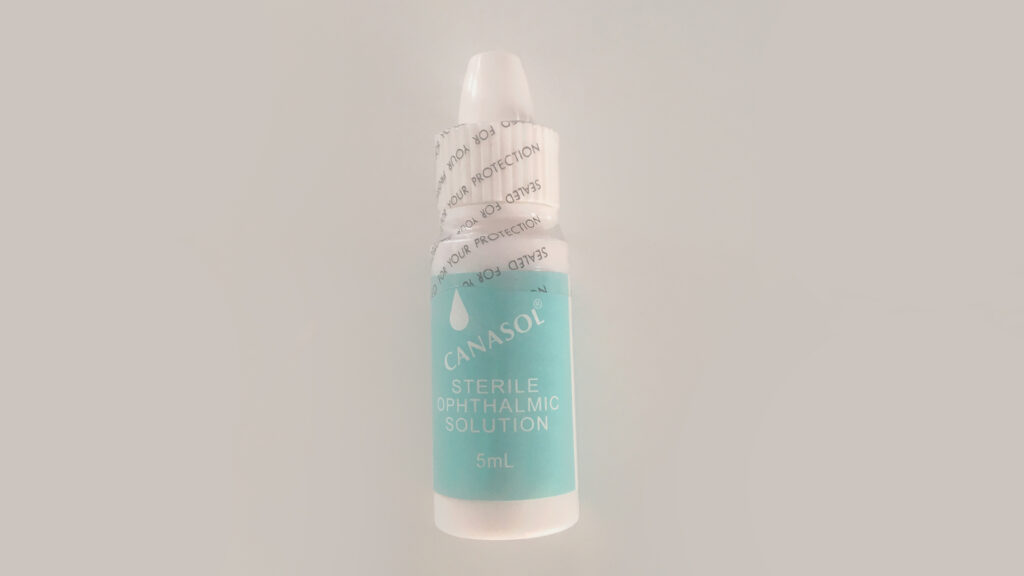
Moving on smartly, we come to renowned Dr. Manley West, a pharmacologist known for his pioneering work in the development of medicine from the marijuana plant. Doctor West was born in Fairy Hill, Parish of Portland, Jamaica, and later moved to the UK. Eventually, he began to study pharmacology at the University of London where he earned his Ph.D.
In 1985, Dr. West, along with Dr. Albert Lockhart, an ophthalmologist, co-developed the drug Canasol from cannabis to treat glaucoma. Glaucoma is a condition that damages the eye’s optic nerve. Canasol eye drops reduce the fluid pressure within the eye that is present in late-stage glaucoma.
This wonder drug has been commended for its natural composition and for its being a quarter of the price of other synthetic eye drops. With their drug’s success, Doctor West and Doctor Lockhart were awarded the Order of Merit by the Jamaican Government in 1987.
H. C. Christie – “Artificial” Sponges
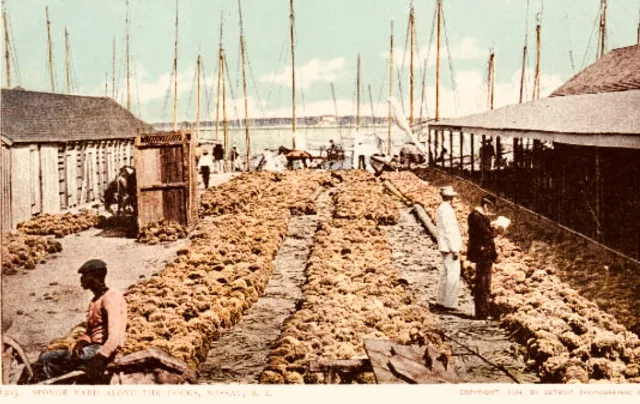
Next, we have a quite old invention but one that has stood the test of time. While The Bahamas has long relied on tourism, sponge production was particularly important during the winter months up until the beginning of the 20th century. Unfortunately, disease and unsustainable harvesting practices affected the local sponge population and consequently its related industry strongly.
In 1927, H. C. Christie invented a way of growing Artificial Sponges. He patented an apparatus that could be attached to sponges that grow in the ocean and used to make sponges for domestic and industrial use.
The disc-like apparatus allowed for the growth of dozens of sponges from a single one by cutting the sponge into pieces and attaching them to a simple disc. The sponges were, in fact, still natural, but because they were now growing on a man-made medium, they were considered artificial.
Steel Pan – Trinidad and Tobago
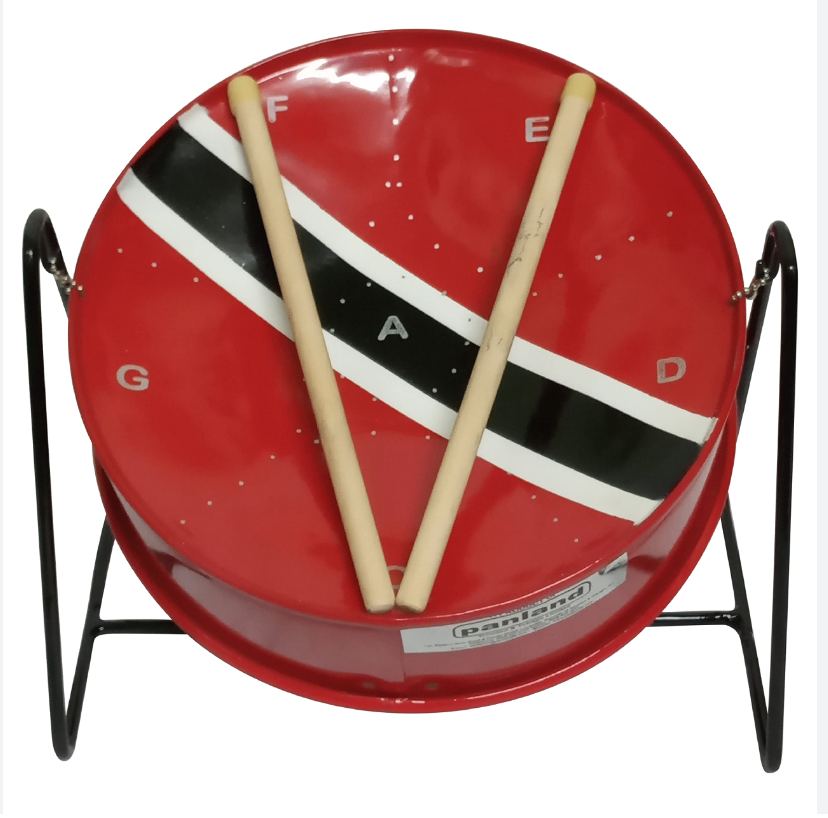
The invention of the Steel Pan, also known as the Steel Drum, is a fascinating chapter in the cultural and musical history of Trinidad and Tobago and is considered to be the only new instrument invented in the 20th century. Steel pans originated in Trinidad and Tobago during the late 1930s. Initially, steel band players used common household and everyday objects to create an improvised ensemble of instruments with objects such as buckets, dustbins, and oil pans. Eventually, the crafting of more detailed instruments began to develop, and objects were improved by skinning, grooving, tempering, and tuning to create more accurate sounds.
In 1945, the first fourteen-note steel pan with chromatic tones was developed. The main object used to create the instrument was a 55-gallon oil drum, fueled by the growing petroleum industry in the twin-island republic. Its tonalities were created by studying the physical aspects of the metal with trial and error experimentation and a good musical ear. Soon, the sounds of the steel pan began to characterize the music not only of its home Trinidad and Tobago but also of the entire Caribbean.
World’s First Sargassum Seaweed Processing Plant – Johanan Dujon
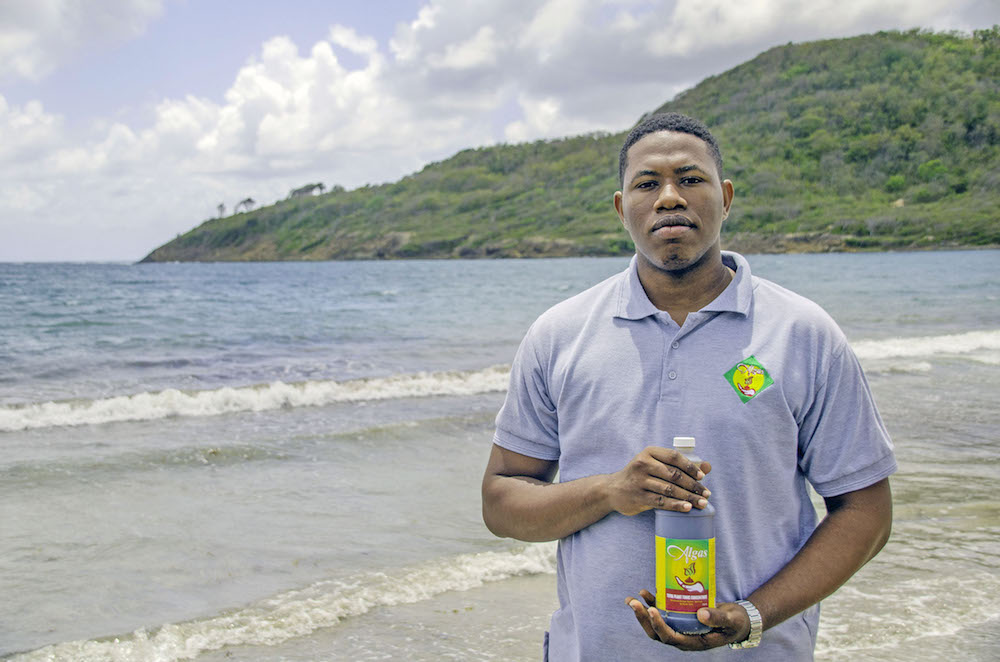
Next up on our list, we highlight a modern invention out of necessity. As many may know, the Caribbean has become chronically affected by the invasion of Sargassum Seaweed only the shores of pristine Caribbean countries. Many around the region have been looking for solutions to address this impending crisis.
Well, our next inventor has found a solution. Algas Organics is an organic fertilizer brand developed by innovator Johanan Dujon who invented the World’s First Sargassum Seaweed Processing Plant that has helped to rid Saint Lucia’s beaches of thousands of tons of wet seaweed for over half a decade through a zero-waste manufacturing process.
The algae is manually removed from the east coast of St Lucia and taken to the world’s first sargassum seaweed processing facility where it is converted into organic compost for the farming industry. Algas Organics has processed two million pounds of plants since 2015 and the company’s revenue has been growing year on year, all the while reducing the quantities of the destructive seaweed on the country’s shores.
Jamaica Solo Sunrise Papaya (resistant to the Papaya Ringspot Virus)
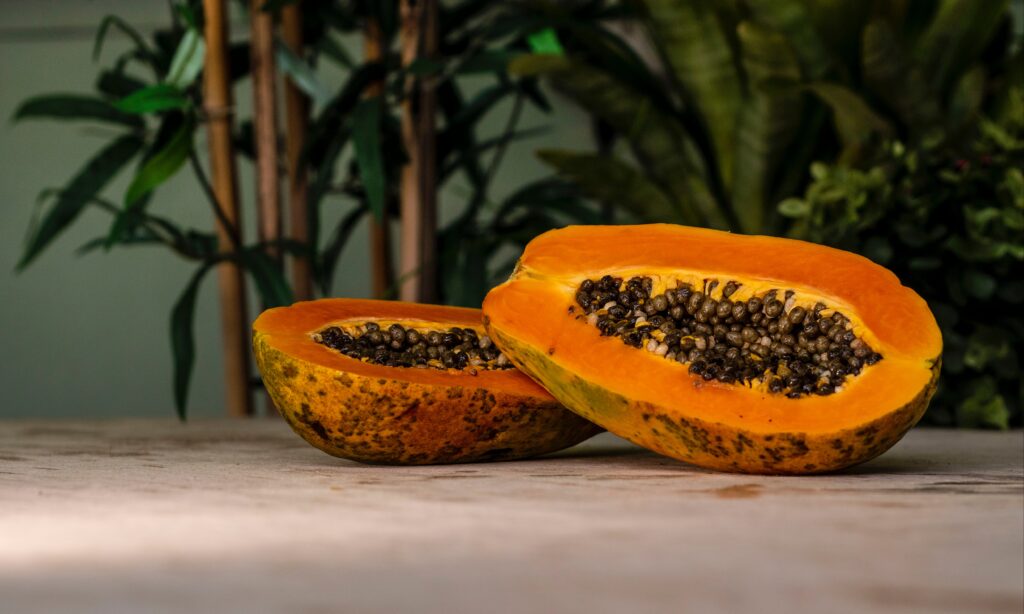
Photo by Debora Cardenas on Unsplash
Moving on smartly, we come to a remarkable agricultural product breakthrough and product that has potentially saved the Papaya fruit. Professor Paula Tennant is a Research Plant Pathologist working with virus diseases of fruit crops at the University of the West Indies, and she has developed a strain of Papaya that is resistant to the Ringspot Virus, a Virus that affects the visual aesthetics of papaya as well as its taste.
Professor Tennant’s research was focused on manipulating the genetic make-up of the papaya to produce a new bioengineered variety that was resistant to a pathogenic plant virus. This variant has been come to known as the Jamaica Solo Sunrise. For her work, she received a Ph.D. from Cornell University and continues to do research work on diseases as a researcher at the University of the West Indies.
Rum – Barbados
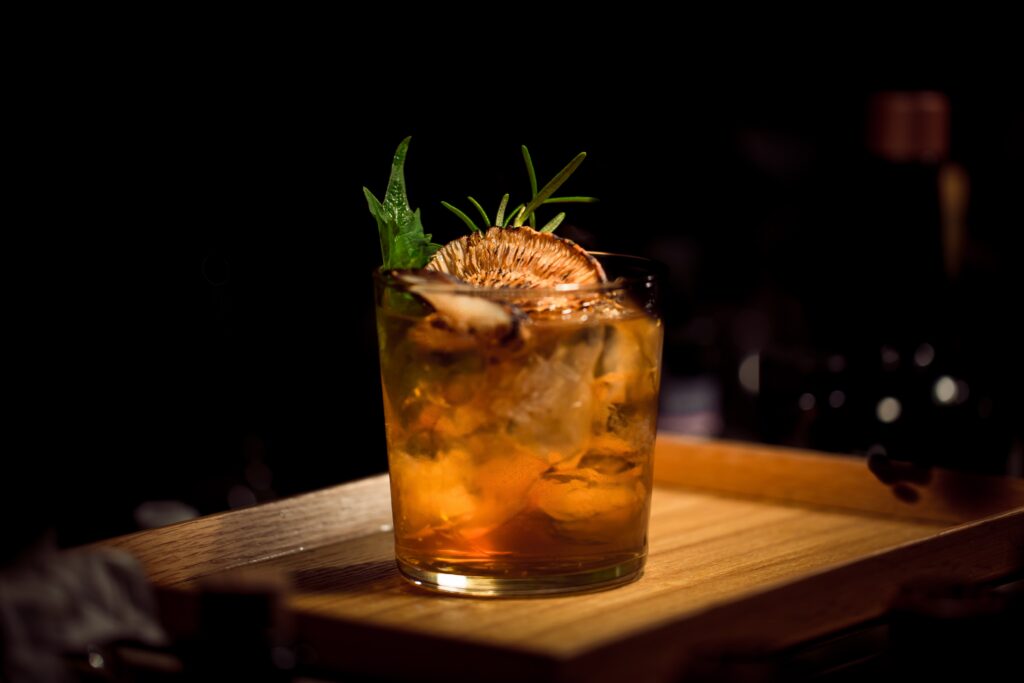
Photo by Ash Edmonds on Unsplash
Next on our list of Caribbean inventions, we come to one of the most famous alcoholic spirits and that is none other than the pirate’s water, Rum. The origins of Rum go back to the 17th century and is believed to be from Barbados, where it was made on the sugarcane plantations of the region.
The first mention of the concoction can be found on records from Barbados in about 1650, where it was called “kill-devil” or “rumbullion” but by 1667 it simply became known as rum. The world’s oldest rum company was established in 1703 and to this day, Mount Gay Distillery in Barbados still produces its world-class product.
The Caribbean, with its ideal climate and fertile soil for sugarcane cultivation, became a hub for the production of sugar and molasses. Rum was initially created as a byproduct of the sugarcane refining process. The molasses, a thick syrup leftover from sugar production, was fermented and distilled to produce the spirit known as rum. Quickly, each island developed its own unique techniques and styles of rum production, contributing to the diverse range of flavors and characteristics found in the spirit today.
Automatic Shoe-Lasting Machine – Jan Ernst Matzeliger
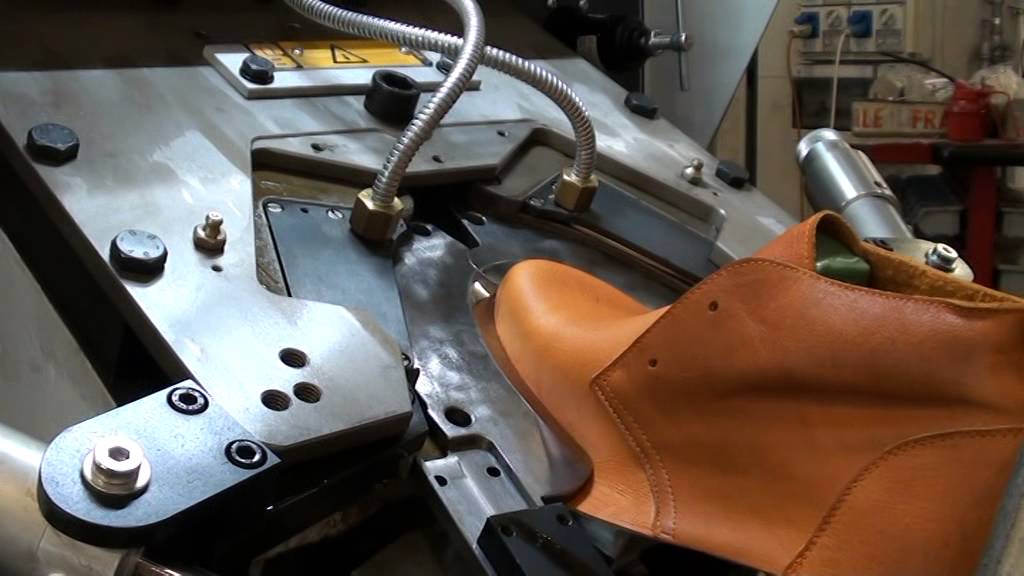
Continuing along our list, we come to a prolific inventor and mechanical genius Jan Ernst Matzeliger. Born in Paramaribo, Suriname, Jan was best known for his revolutionary invention, the Automatic Shoe-lasting Machine, which transformed the shoe manufacturing industry. Driven by a desire to improve efficiency, Matzeliger dedicated himself to developing a machine that could automate the lasting process.
Lasting is the process of pulling the upper part of the cover over the bottom or ‘last’, which is when the shoe begins to take shape. Jan’s machine employed pincers to hold the upper, pulled it over the last, and hold it in place, before pinning the leather to the last and discharging the completed shoe.
Matzeliger’s invention dramatically increased the speed and efficiency of shoe production. His machine, capable of lasting 150 to 700 pairs of shoes per day, far surpassing the capabilities of any manual laborer, reducing costs and increasing output. The invention made shoes more affordable and accessible to a broader range of people and is seen s one of the biggest developments during the industrial revolution.
Cattle Breeding – Thomas Lecky

Photo by Isi Parente on Unsplash
We next highlight another leader who has made remarkable breakthroughs in the area of Agriculture, but this time, as it relates to animals. Hailing again from Jamaica, we have Thomas Lecky, a Jamaican scientist renowned for his pioneering work in developing several New Breeds of Cattle.
Lecky is known as one of Jamaica’s earliest environmentalists, and a strong advocate for the conservation of hillsides. His research in cattle breeding led to the development of three breeds that were more suited for the tropical climate of the Caribbean: the Jamaica Hope, the Jamaica Red, and the Jamaica Black. The most prolific of these breeds is the Jamaica Hope which is the first breed of cattle indigenous to Jamaica.
The Jamaica Hope was a combination of the British Jersey cow with the Holstein and the Indian Sahiwal breed and could produce up to an average of 12 liters of milk a day, three times that produced by other cattle on the island. Lecky’s work revolutionized the Jamaican dairy industry and he became known as the Father of the Jamaican Dairy Industry.
The Jaipur Knee – Joel Sadler
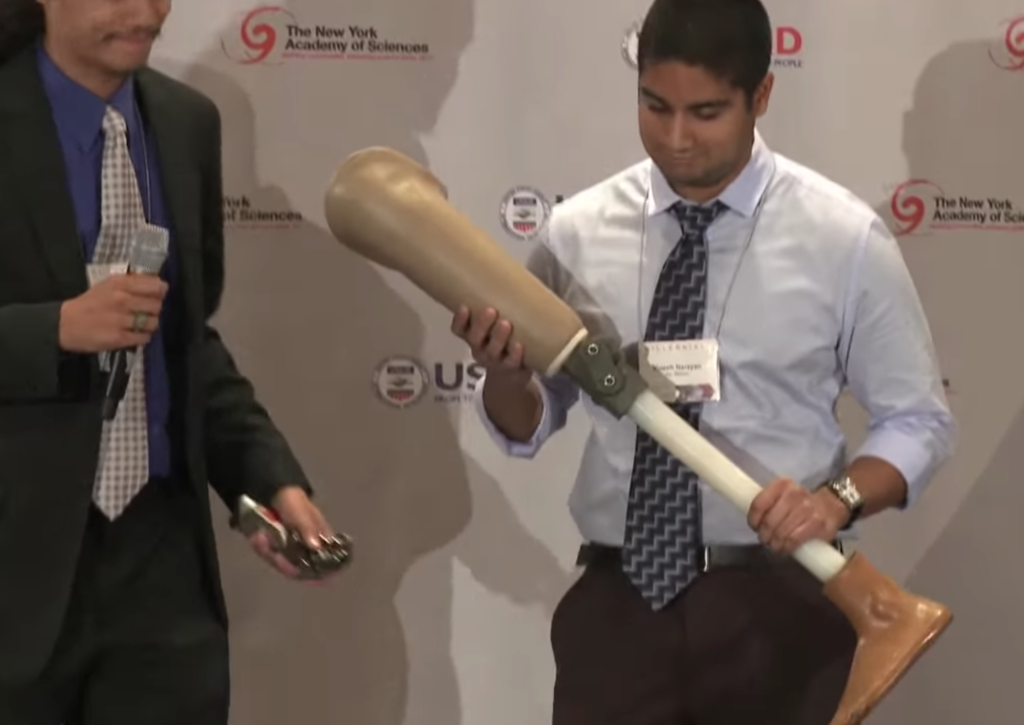
And finally, we mention an invention that is changing the lives of thousands of people around the world, giving them a better life. The Jaipur Knee has changed the world of prosthetics in recent years, as the knee has enabled amputees in low-income communities worldwide to live an easier life.
Joel Sadler a young inventor from Jamaica, while pursuing his Mechanical Engineering graduate degree at the University of Stanford was challenged to create a low-cost, high-performing prosthetic knee joint for amputees in developing countries. Working in collaboration with the Jaipur Foot Group, a charity that provides prostheses to amputees in India, Sadler set out to design a budget-friendly prosthetic knee joint.
Sadler and his team studied the mechanics of high-end titanium knee joints in the US ranging from $10,000.00 to $100,000.00, including the materials they used to build less expensive prosthetics for developing countries. The resulting product, the Jaipur Knee, was developed using “an oil-filled nylon polymer” allowing the self-lubricating joint greater flexibility and exceptional performance. All of these benefits while being significantly cheaper and more affordable than conventional titanium knees.
So as you can see, Caribbean inventors and inventions have made significant contributions worldwide, showcasing ingenuity and resilience. From the steel pan’s captivating melodies to groundbreaking inventions like Alan Emtage’s pioneering work in information retrieval, Caribbean innovators have left an indelible mark across various industries.
Their achievements remind us that great ideas transcend boundaries and inspire generations to pursue their passions and think outside the box. As we celebrate Caribbean inventors, we must foster environments that support creativity, research, and development to continue nurturing groundbreaking ideas that shape our world.
Which Caribbean inventions or inventors Have we forgotten, let us know in the comment section below.
Also, let us know which of these inventions affects you the most.


